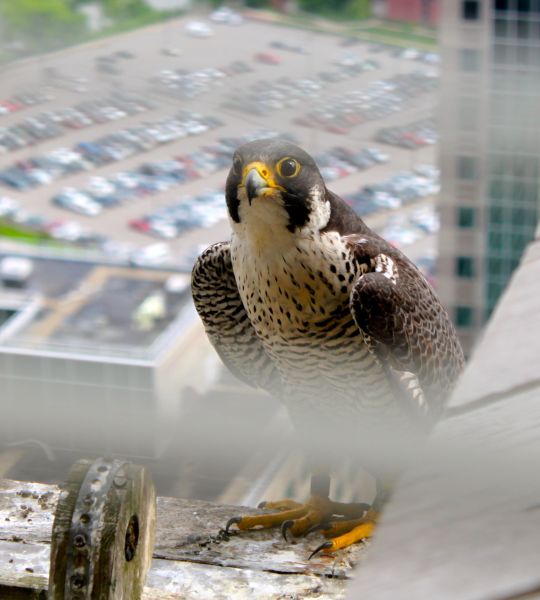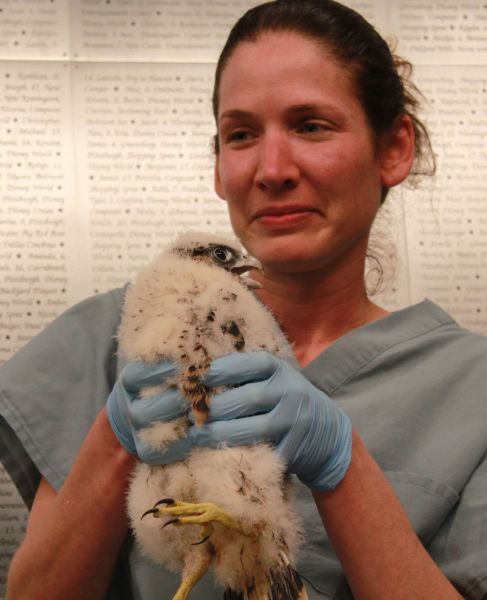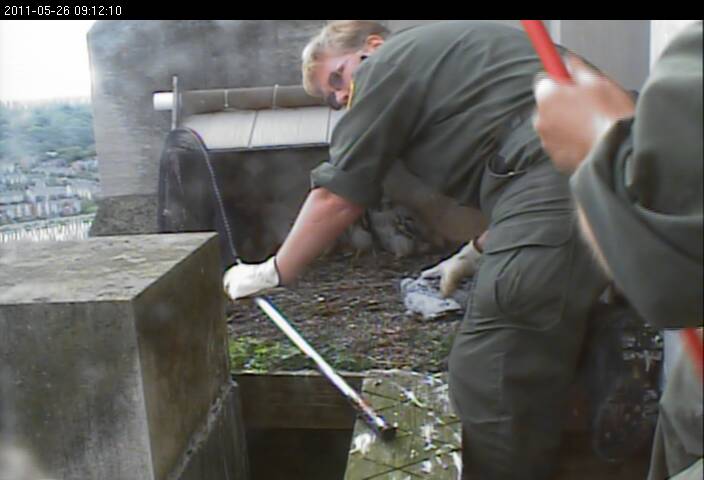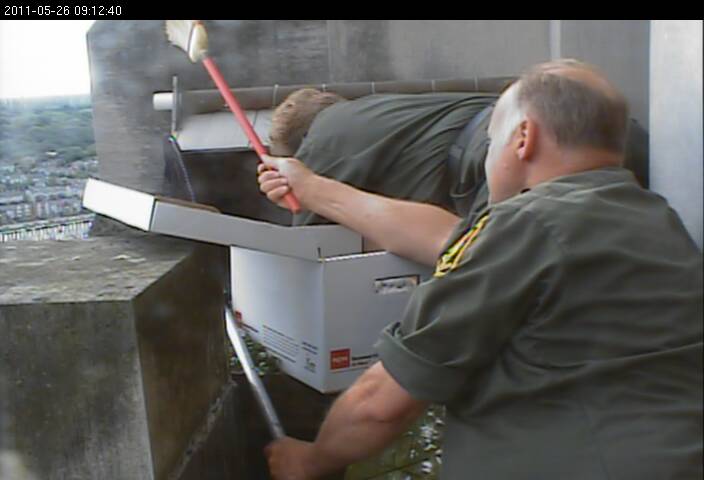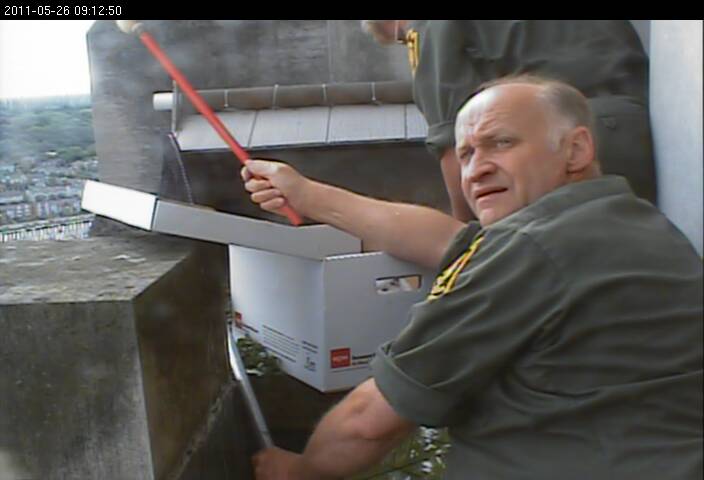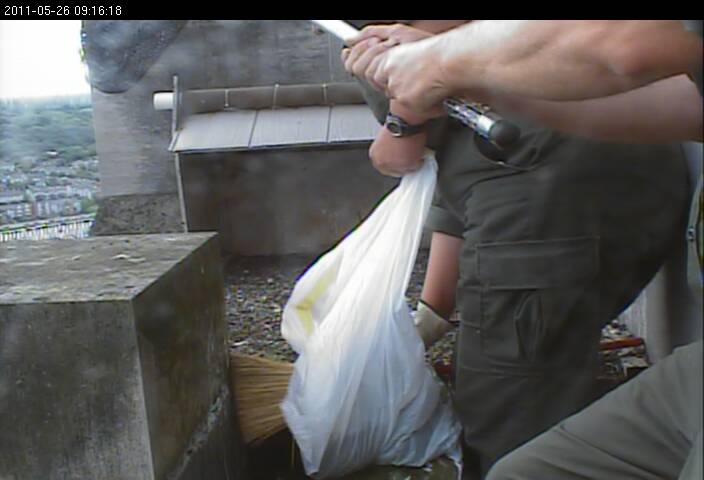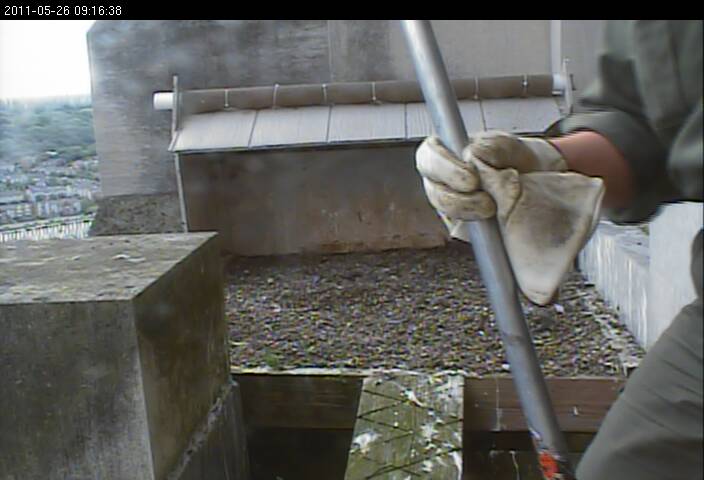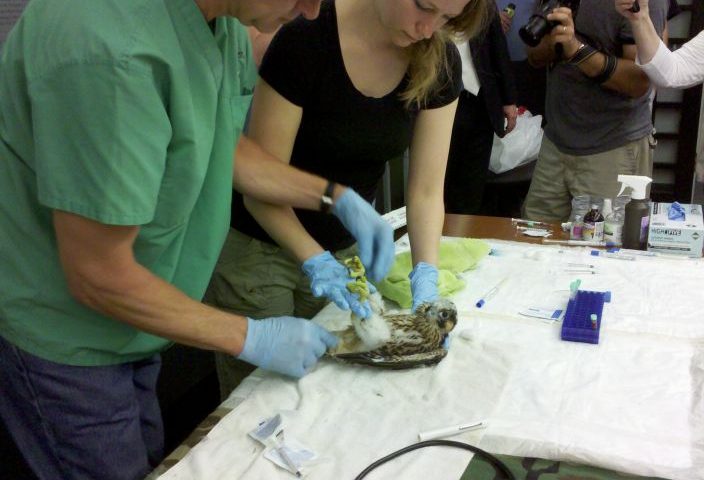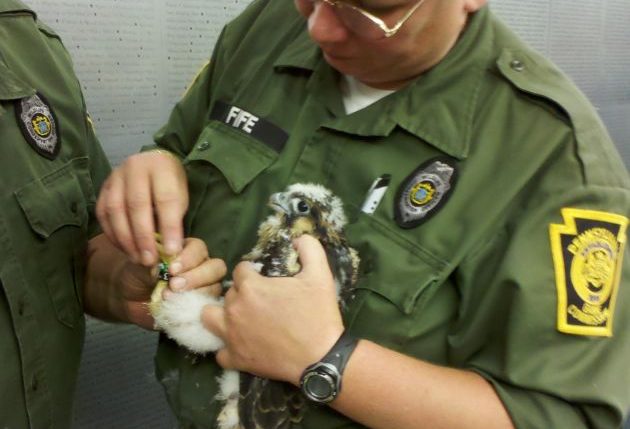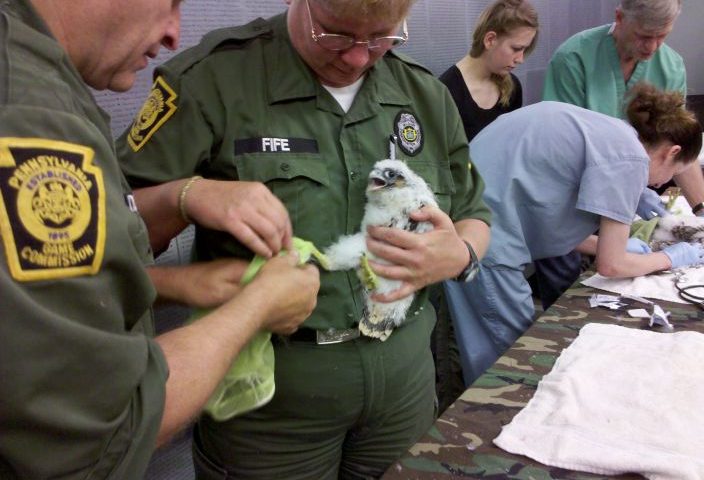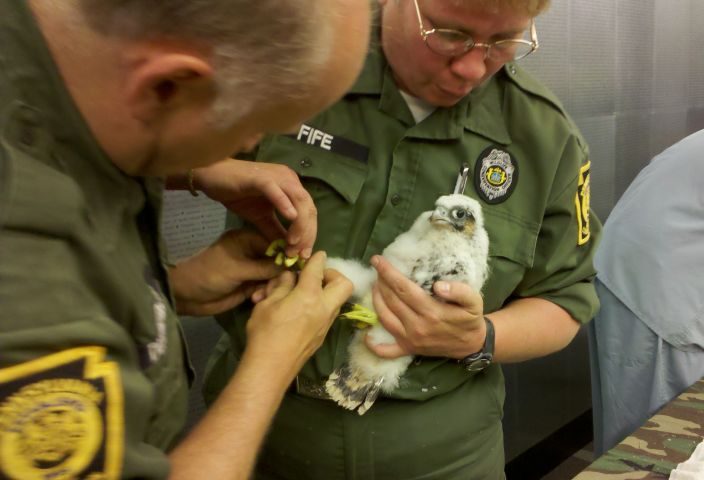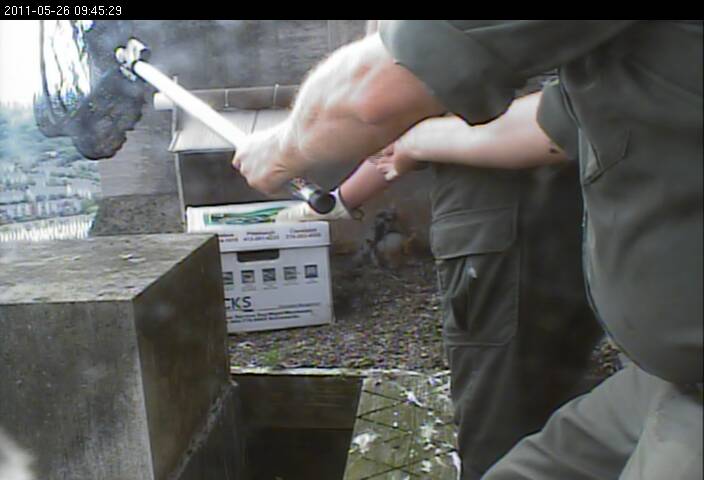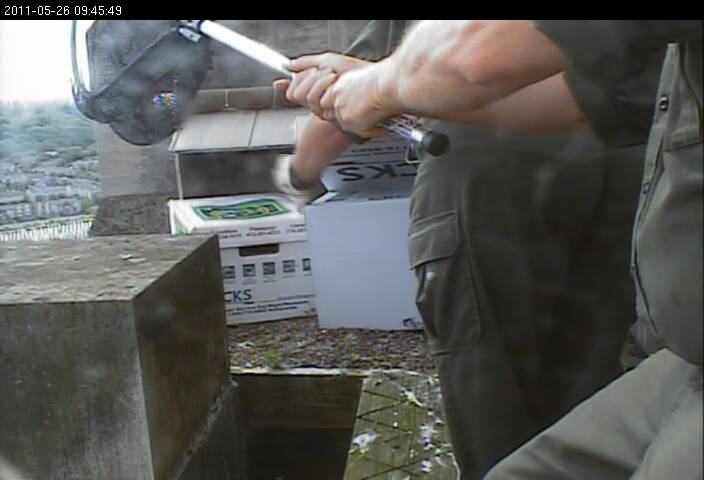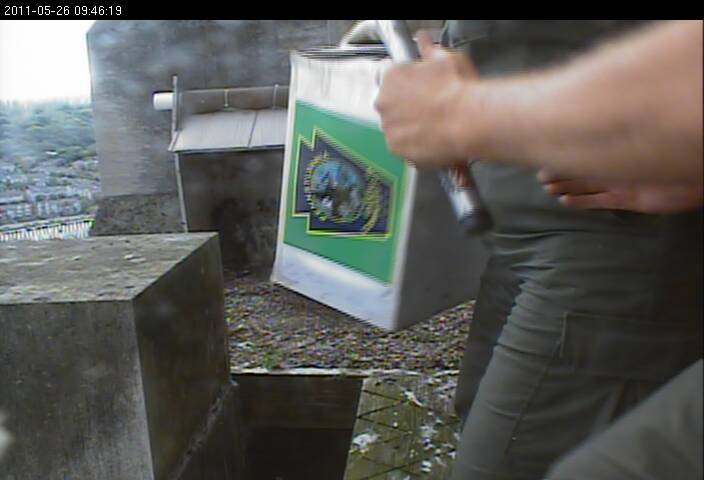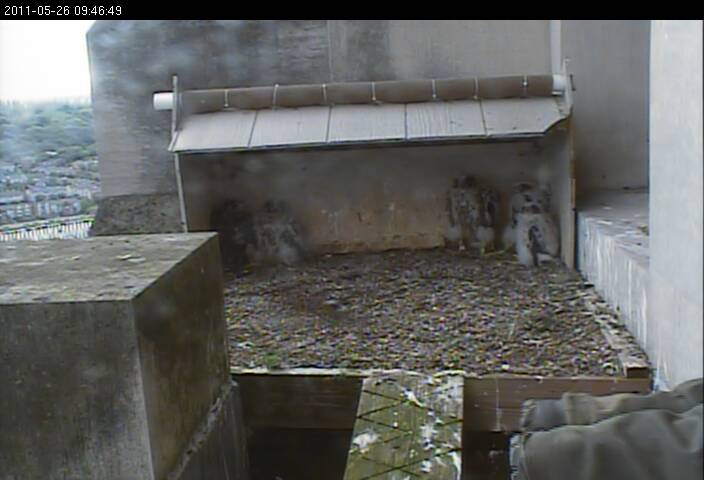
Pitt Peregrine Fledge Watch got off to a great start yesterday.
The previous evening one of the four young peregrines walked off the nest and stayed away all night so I expected we’d see at least one juvenile on the nestrail — and we did.
A good crowd of watchers stopped by including: Paige and her family, Sebastian and his mom, Donna, Anne-Marie, John, Peter and his parents, Herman (all the way from Atlanta) with his nephew, Monika, Mary, Tony Bledsoe and Chuck and Joan Tague. Chuck took this picture of Herman, me, Anne-Marie and Donna while we weren’t watching.
The heat kept everyone lazy, including the peregrines. The adults, Dorothy and E2, watched their young and patrolled the skies near the Cathedral of Learning. Overhead we saw turkey vultures, a red-tailed hawk and a broad-winged hawk (nice!). All of them rose high on thermals to get out of the peregrine danger zone.
Despite the heat the young peregrines were active. A few of us had bookmarked the webcam on our cellphones so we watched on our phones when we saw nothing from the ground. The webcam revealed how the youngsters were climbing to the railing. Here’s one on his way up. All three are panting. Yow, it was hot!
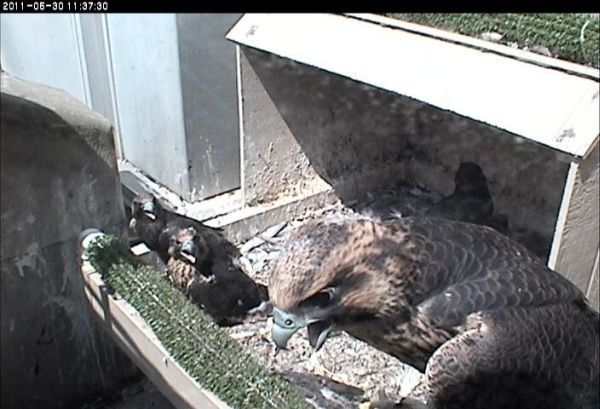
Around noon one of the four jumped up to the nestrail and ran back and forth, flapping. Good wing exercise, but hot work! After a couple of runs he rested at the far corner of the nestrail, pictured here by Donna Memon. His wings and mouth are open because he’s hot!
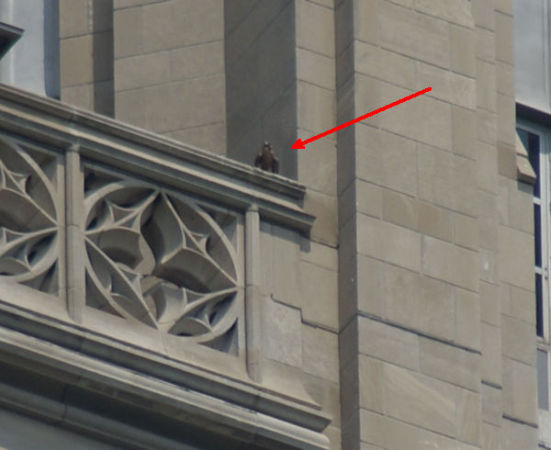
By 1:15pm most of us were ready to find a cool perch of our own so we adjourned.
The weather will be hot again today (930!) and a thunderstorm is possible. I’ll be at the tent from 1:00-2:00pm and 5:30pm-7:00pm — but not if it’s storming.
Check here for the complete Fledge Watch schedule and location.
Come on down!
(photo of the watchers by Chuck Tague, photos of the peregrines from afar by Donna Memon, webcam photos from the National Aviary’s snapshot camera at the Cathedral of Learning.)
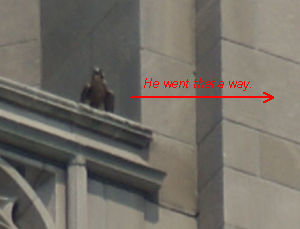
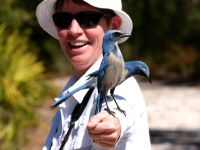 By next Sunday the young peregrines at the Cathedral of Learning will be completely off camera (they’re leaving the nest) but I’ll be on camera on WQED-TV.
By next Sunday the young peregrines at the Cathedral of Learning will be completely off camera (they’re leaving the nest) but I’ll be on camera on WQED-TV.


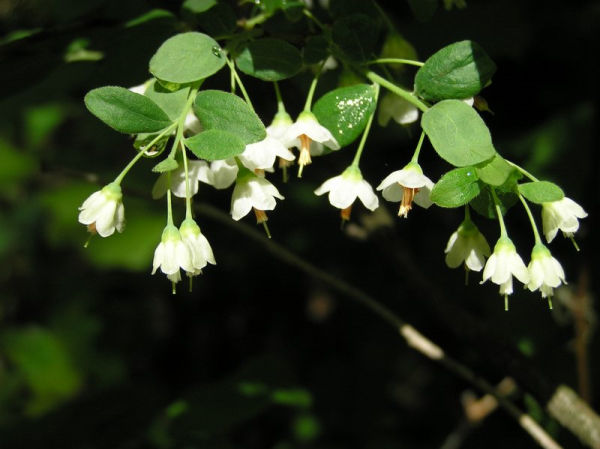
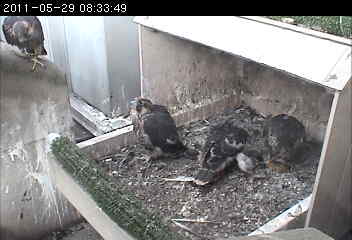
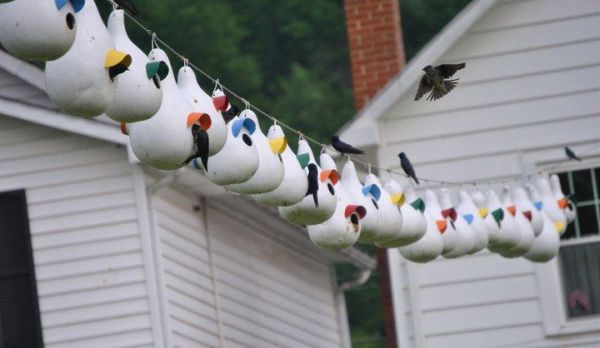
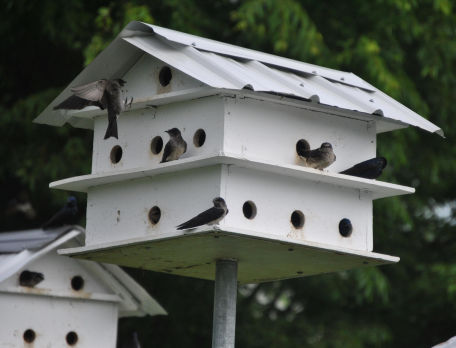

 Here’s an update on next week’s
Here’s an update on next week’s 